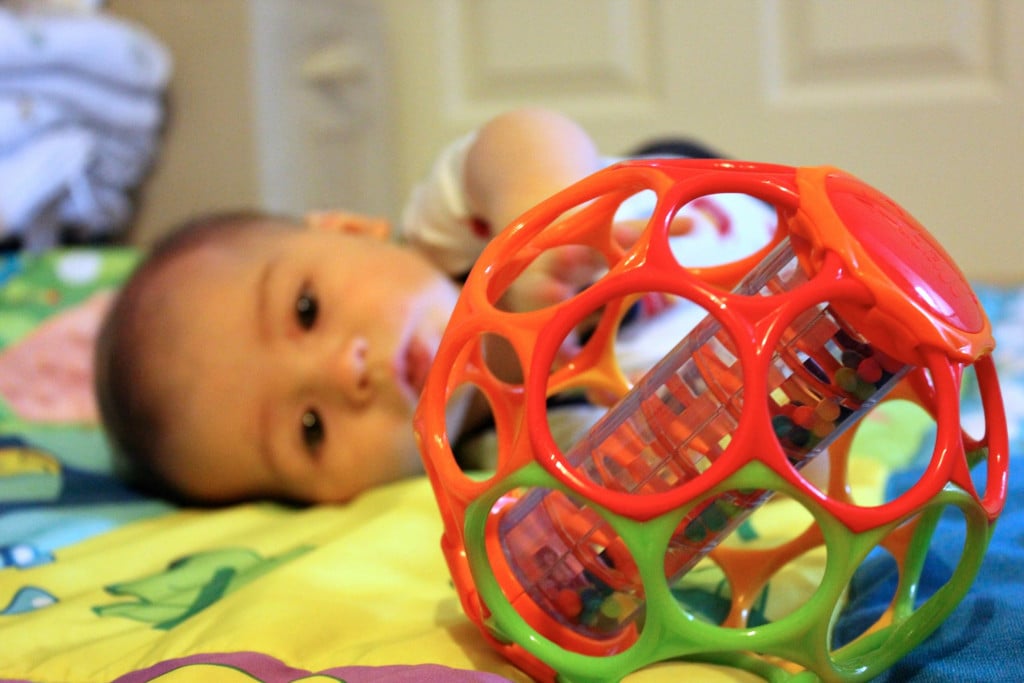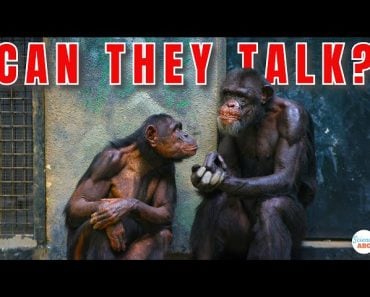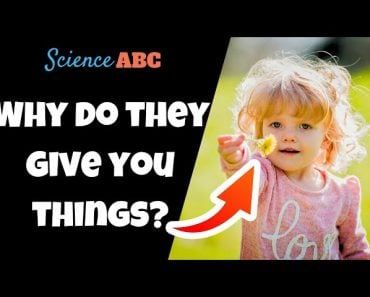Peekaboo is a game that is universal and appeals to all infants, across varied cultures, demonstrating its deep ties to something that is common and primal for all humans—a baby’s early understanding of how the world works. The pleasure of Peekaboo relies on an element of surprise associated with violating a baby’s expectation of how the world functions. A baby’s positive reaction to the game indicates their healthy development of object permanence skills, which is a critical milestone of development!
“P-e-e-k-a-a-a…” a mother says in a calm, high-pitched tone while hiding her face… “Boo!” With that final word, she exposes her face and sends the child into a fit of giggles. This is a scene with which we’re all familiar. Called “Coucou” in French, “Kakkoong” in Korean, and dozens of other cultural variations, the simple game of Peekaboo is universal.

This game is known to engage children as young as even 16 weeks and works throughout the first year of development. Even infant Rhesus monkeys have been observed to understand peekaboo, which hints at deep evolutionary origins of this game.
Recommended Video for you:
What Is Peekaboo? The Mechanics Of The Game
Have you ever tried to place a toy in front of a very young infant and then obstructed the object with a piece of cloth? If the baby is younger than 8 months, they will lose interest in the toy and fail to search for it. A baby older than 8 months, however, will typically lift the cloth to discover the toy behind it.

This behavior displays much more than what meets the eye. The idea that ‘objects continue to exist even if they’re not visible’, develops in children at around 6-8 months of age. This skill is called “object permanence”. This is not unique to humans, but can also be observed in primates, such as Rhesus monkeys, where a similar development of the skill is observed in infancy.
Prior to this age, infants believe that anything that “disappears” ceases to exist. They apply this rule not only to objects, but also to people, including their mother/parent. Thus, when a mother or caretaker hides from an infant, it creates discomfort, termed separation anxiety. However, this quickly disappears and is replaced by relief when the mother/parent reappears. This is the crux of the game of peekaboo.
The Development Of Peekaboo With Age
Very young children observe their parents play peekaboo and passively partake by smiling in response to the surprise reveal.

Over time, babies learn to expect that the person will reappear in the game and find it rewarding when their expectation is proven correct. As they get older, babies initiate the game themselves and demonstrate their knowledge of the game by briefly hiding their face and revealing it in line with the parent’s verbal response of “peekaboo”. Thus, Peekaboo remains relevant throughout infant development, although the child’s contribution to the activity undergoes a major transformation as their understanding of the game improves.
So… what gives this game its universal appeal, making it a staple of parent-child interaction across cultures? To answer this question, we need to understand how this game works.
Peekaboo As A Precursor To Humor
The game of peekaboo invariably makes every infant smile or laugh.

Scientists have suggested that peekaboo elicits laughter because it is the very first “joke” that a child enjoys. The initial anxiety caused by the mother’s disappearance is resolved by her anti-climactic reappearance. This is also the primary structure of a “joke”, which elicits pleasure in humans.
Theories of humor suggest that “jokes” often rely on “incongruency”. In simple terms, any pleasant twist that violates our expectation or prediction is considered “funny” by humans.
For example, a man steps on a banana peel. We expect the man to be gravely injured, but he simply slips and falls without any major injuries, violating our expectations. This mismatch between the actual result and our prediction makes it funny. Another theory suggests that events that initially look grave and later turn out to be “false alarms” are considered funny.
The disappearance of the mother during peekaboo leads the child to expect that she has ceased to exist and will never reappear. This is violated by her surprising reappearance, which elicits laughter from the baby; the game involves both incongruence and “false alarm,” in keeping with the two theories of humor explained above.
Thus, peekaboo can be considered an early form of joking that makes babies laugh. Laughter increases the secretion of opiates in the brain, giving us pleasure. Thus, the “humor” in peekaboo is likely what makes babies love this simple game!
Advantages Of Engaging A Child With Peekaboo
Psychologists believe that peekaboo is extremely helpful in the healthy development of an infant. The use of peekaboo helps infants cope with separation anxiety related to removal from their mother or parents.

The game helps the baby learn that disappearing objects can reappear eventually, lessening anxiety when the mother or primary caretaker disappears from its field of view.
Conclusion
Peekaboo is one of the best methods to socialize with an infant as early as the non-verbal stage of development. It is universal and appeals to all infants, across varied cultures, demonstrating its deep ties to something that is common and primal for all humans—a baby’s early understanding of how the world works.
The pleasure of Peekaboo relies on an element of surprise associated with violating a baby’s expectation of how the world functions. A baby’s positive reaction to the game indicates their healthy development of object permanence skills, which is a critical milestone of development!
References (click to expand)
- (1993) The peek-a-boo game. - APA PsycNet. The American Psychological Association
- Wise, K. L., Wise, L. A., & Zimmermann, R. R. (1974, May). Piagetian object permanence in the infant rhesus monkey. Developmental Psychology. American Psychological Association (APA).
- Piaget, J. (1954). The construction of reality in the child.. (M. Cook, Trans.), []. Basic Books.
- (1976) A cognitive-developmental analysis of humour. - APA PsycNet. The American Psychological Association
- Suls, J. M. (1972). A Two-Stage Model for the Appreciation of Jokes and Cartoons: An Information-Processing Analysis. The Psychology of Humor. Elsevier.
- Ramachandran, V. S. (1998, October). The neurology and evolution of humor, laughter, and smiling: the false alarm theory. Medical Hypotheses. Elsevier BV.
- (1993) Parent–child play: Descriptions and implications. - APA PsycNet. The American Psychological Association












